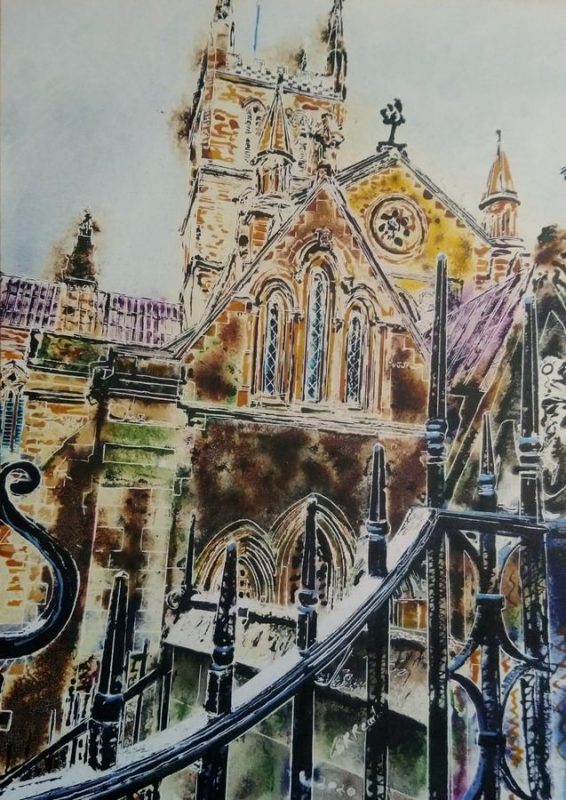Southwark Cathedral is the oldest church building in London. It is a stunning gem tucked away in the city. The origins of the church are mysterious since no one knows when the first building was constructed. However, it is believed that a church has existed on the site for over 1,000 years.
Impressive Southwark Cathedral
Cathedral frontage’s in particular were designed and built to impress. Amassed with detailed layers upon layers of decoration they quite often leave the artist, Cathy Read, disappointed. The lines are clean, regular, and perfect – putting its best foot forward. And that is the issue. Although Cathy appreciates symmetry, she prefers things a little wilder.
We talk about facades as a fake front that people hold up concealing the ugly hidden view. Often these ancient buildings are far more interesting inside, or around the back – like the Southwark Cathedral in this view. Despite being the hidden ‘ugly’ view, consider how every attempt at decoration was made. The stonework beautifully dressed and laid. Intricately carved columns and a myriad of other tiny details. The glass is leaded in tiny diamond panes. Even the railings have curves and shaped tips. All the details, lovingly created by master craftsman, whose names, if they were ever known, are long forgotten.
Looking at Southwark Cathedral one cannot but marvel at the architectural revolution it represents. The invention of the Norman arch made buildings like this possible. Today we take their buildings for granted, but can you imagine how astonishing the structures were to people at the time? They had never seen anything like these Cathedrals popping up all over the United Kingdom and Europe. We can say, “Popping up”, but in truth they took decades to build, many over a century. Southwark was certainly not the first of its kind, but regardless, it must have felt like a construction revolution. Simply, awe inspiring – as was the intention.
Southwark Cathedral's Sense of Permanence
The building has aged and feels permanent. First recorded as a church in 886AD and in its present form between 1220 and 1420. Looking at the painting itself, a rainbow of colours exists from honey coloured stone to black railings teeming with blue. Churches are mired in history, especially in the UK and Europe. They were status symbols. Public buildings used in the politics of the time, iconography to influence as statements of power and wealth. These buildings have little to do with the humble message taught by Jesus Christ. They are rather a product of a time and culture where power had to be visible and authority given a divine blessing. Or rather, appear to be given a one.
The artist is torn when it comes to cathedrals, and churches in general. She appreciates the feeling of awe and inspiration they convey and is herself personally inspired. But she cannot help thinking how they completely missed the point and that the message they were supposed to herald is lost in translation.

Did you know that Cathy share the her latest creations with a select group of people first. Would you like to join us?
